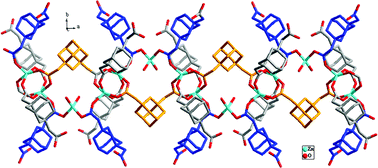Synthesis, structural diversity and fluorescent characterisation of a series of d10 metal–organic frameworks (MOFs): reaction conditions, secondary ligand and metal effects†
Abstract
Along with our recent investigation on the flexible

* Corresponding authors
a
Key Laboratory of Synthetic and Natural Functional Molecule Chemistry of the Ministry of Education, Shaanxi Key Laboratory of Physico-Inorganic Chemistry, College of Chemistry & Materials Science, Northwest University, Xi'an, P. R. China
E-mail:
wyaoyu@nwu.edu.cn
b Hualu Engineering & Technology CO., LTD, Xi'an, P. R. China
Along with our recent investigation on the flexible

 Please wait while we load your content...
Something went wrong. Try again?
Please wait while we load your content...
Something went wrong. Try again?
W. H. Zhang, Z. Dong, Y. Y. Wang, L. Hou, J. C. Jin, W. H. Huang and Q. Z. Shi, Dalton Trans., 2011, 40, 2509 DOI: 10.1039/C0DT01206H
To request permission to reproduce material from this article, please go to the Copyright Clearance Center request page.
If you are an author contributing to an RSC publication, you do not need to request permission provided correct acknowledgement is given.
If you are the author of this article, you do not need to request permission to reproduce figures and diagrams provided correct acknowledgement is given. If you want to reproduce the whole article in a third-party publication (excluding your thesis/dissertation for which permission is not required) please go to the Copyright Clearance Center request page.
Read more about how to correctly acknowledge RSC content.
 Fetching data from CrossRef.
Fetching data from CrossRef.
This may take some time to load.
Loading related content
